Adventures with an Amiga 500: Part 3 - Moar RAM!
Having a working Amiga 500 that’s able to run most classic games is nice, but having one that’s also able to run some of the newer software is much, much better.
The Amiga 500 comes with 512 KB of RAM soldered on the board, acting as what it’s called Chip RAM. Let’s see how much we can add on top of that.
RAM: The fast, the slow and… the chip?
Being a newcomer to the world of Amiga computers, everything related to RAM was very confusing to me. Long story short, on the Amiga 500 you can roughly have three types of RAM:
-
Chip RAM: This is RAM that’s arbitrated by Agnus and can be used by both the main CPU and the coprocessors. This is an ability that solely this kind of memory has. In other words, if certain software requires more Chip RAM than you have, it doesn’t matter that you have plenty of Fast RAM to spare, that software won’t be able to run.
-
Slow RAM: This is RAM on a board connected to the trapdoor expansion slot. It’s also arbitrated by Agnus (and thus, slow), but can’t be used by the coprocessors. Only the main CPU can address it.
-
Fast RAM: Finally, we can have RAM connected directly to the CPU socket. It’s a common practice for accelerator boards to also have some RAM on them, but there are also some boards that just provide the additonal RAM while keeping the original CPU, like the GottaGo FastRAM. This RAM is directly addressable by the CPU without the intervention of Agnus (hence the Fast in its name). Obviously, coprocessors can’t access it.
Chippin’ the board to get more Chip RAM
My Amiga 500 has a revision 6 board with an 8372A Agnus chip. Even though the board only has 512 KB of RAM, this version of Agnus is actually capable of addressing up to 1 MB. We have two options for topping up the amount of RAM, either sourcing the right type of RAM chips and soldering them to the board, or doing a mod that turns Slow RAM installed into the trapdoor expansion into Chip RAM. I opted for the latter which is far easier and safer.
As I wrote in part 1, this Amiga already came with a 2 MB expansion board, but I decided to order a new board with 512 KB with a battery-backed RTC:
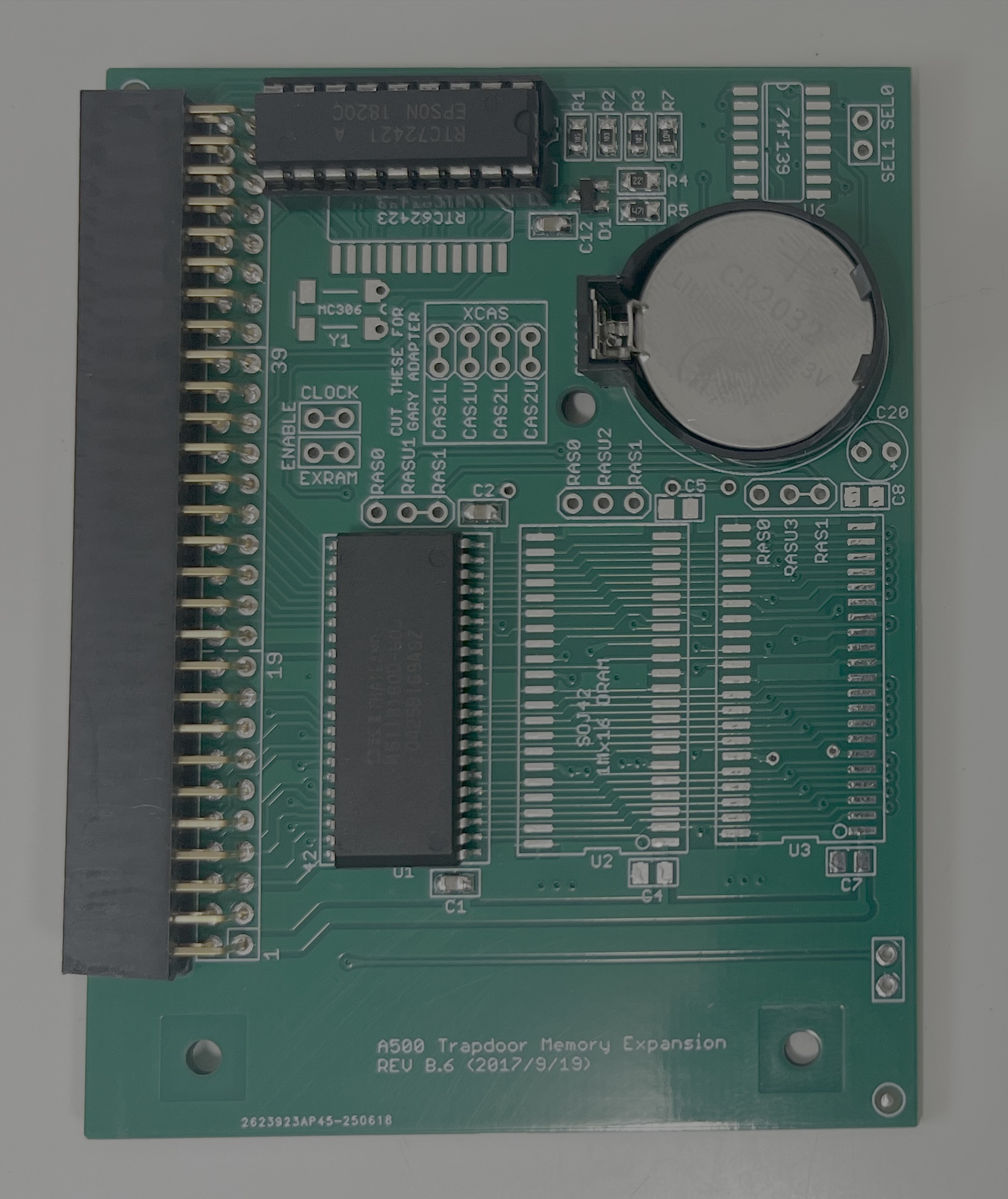
Without any mods, we get the expected 512 KB of Slow RAM in addition to the on-board 512 KB of Chip RAM. I’ve also left the memory test running for some hours to ensure the newly added RAM doesn’t have any defects.
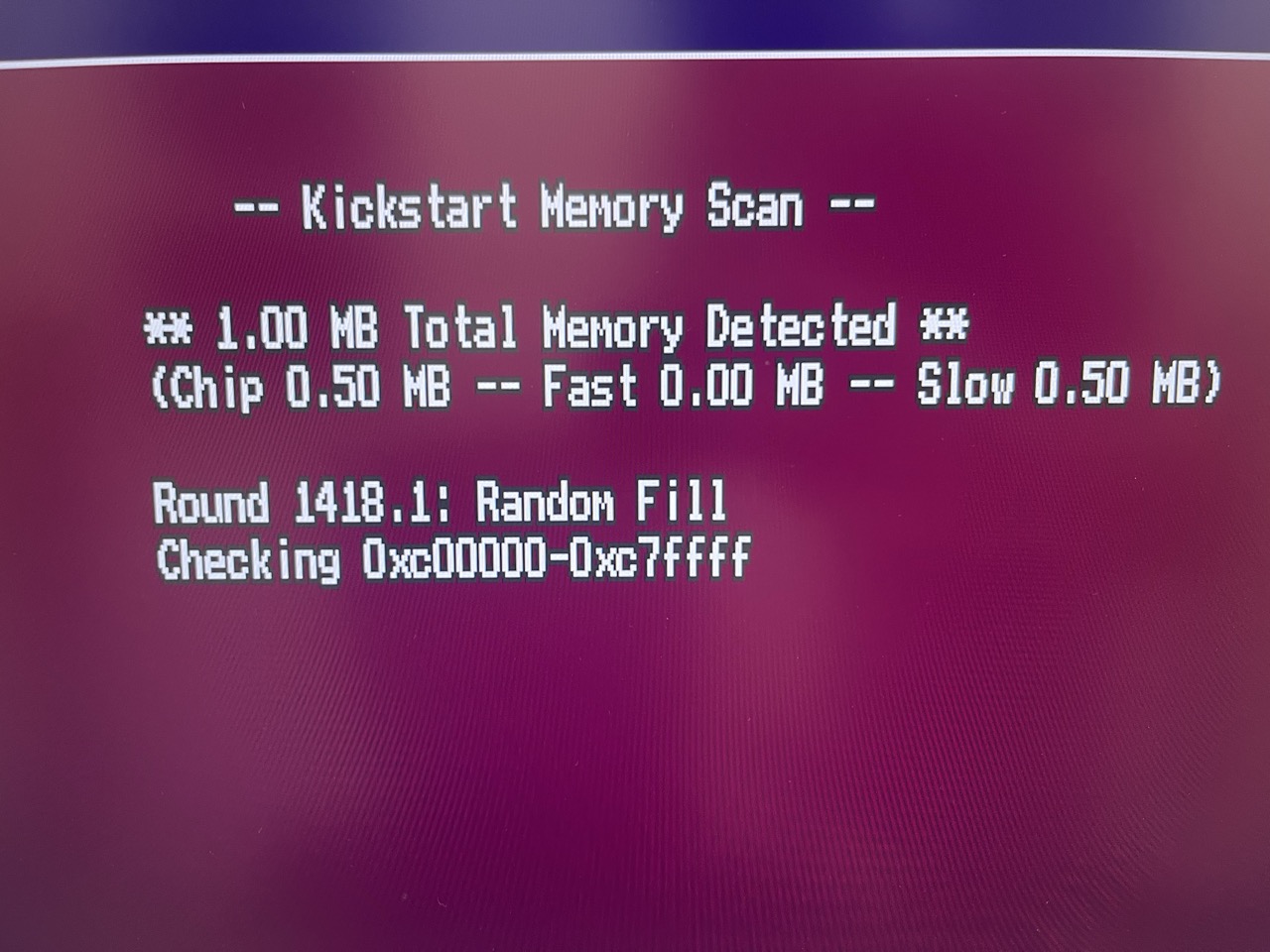
Then it’s just a matter of carefully, very carefully, cutting a couple of traces on the board and soldering two connections, following the instructions.
This is before the mod:
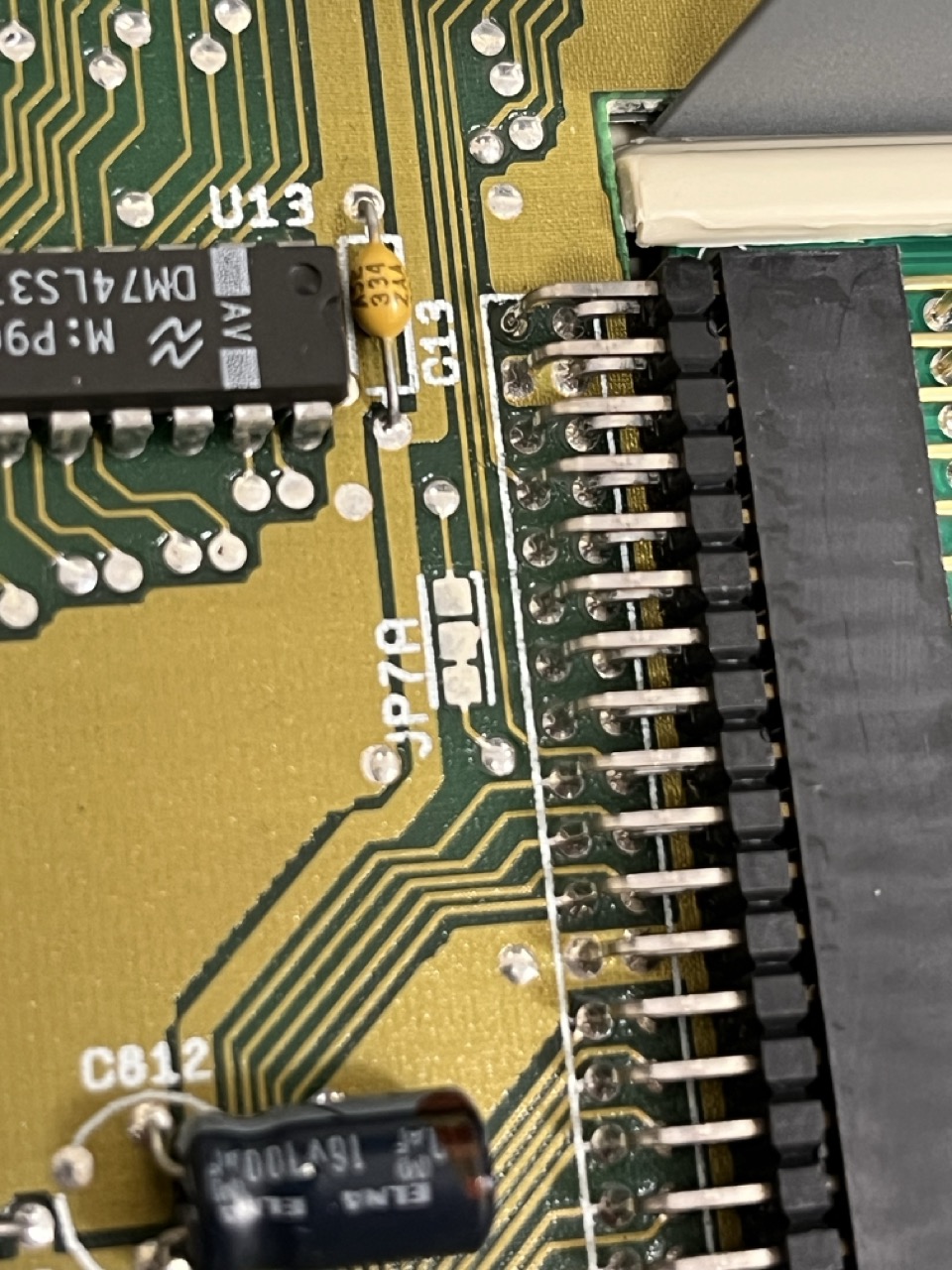
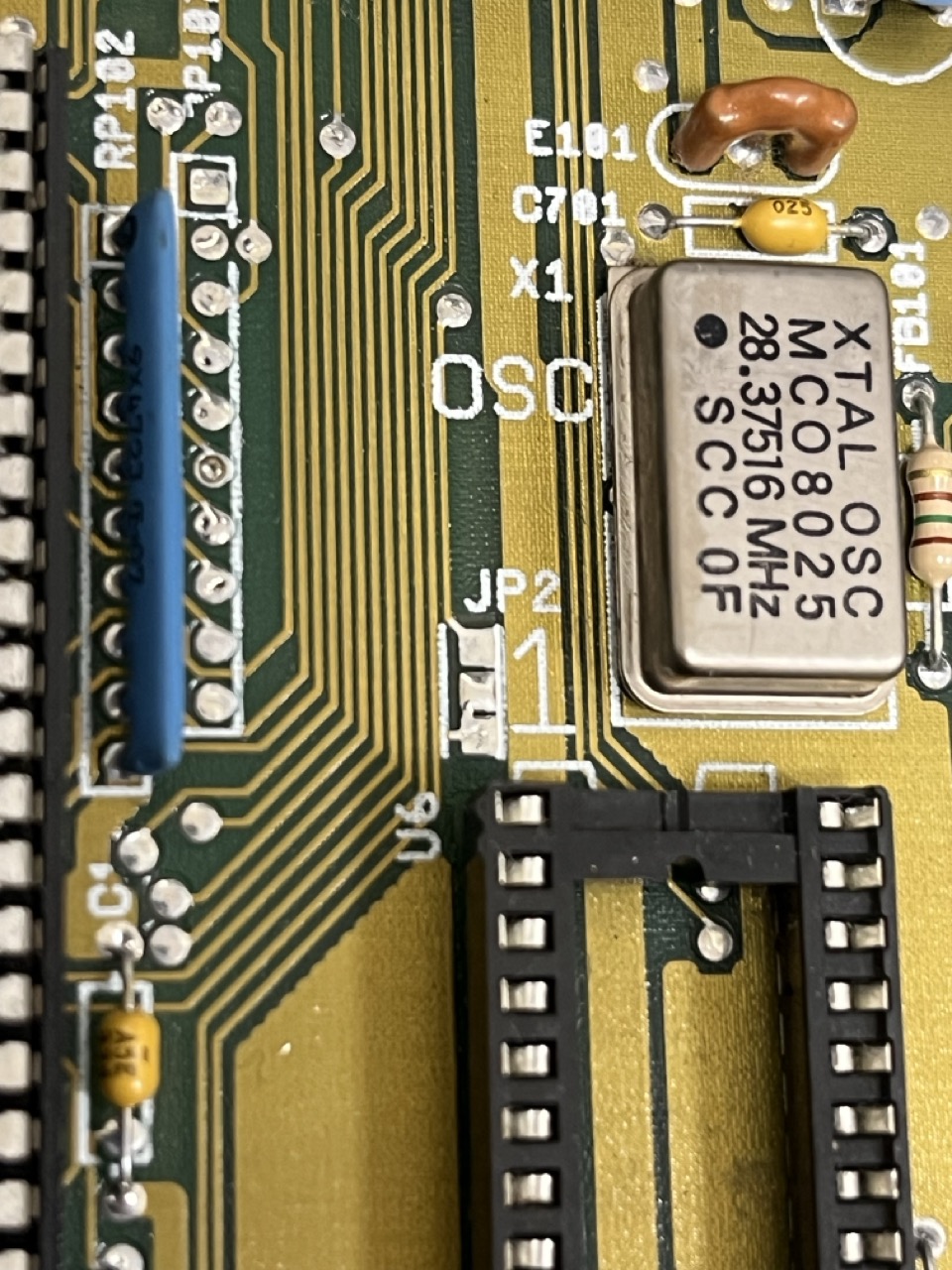
And after the mod:
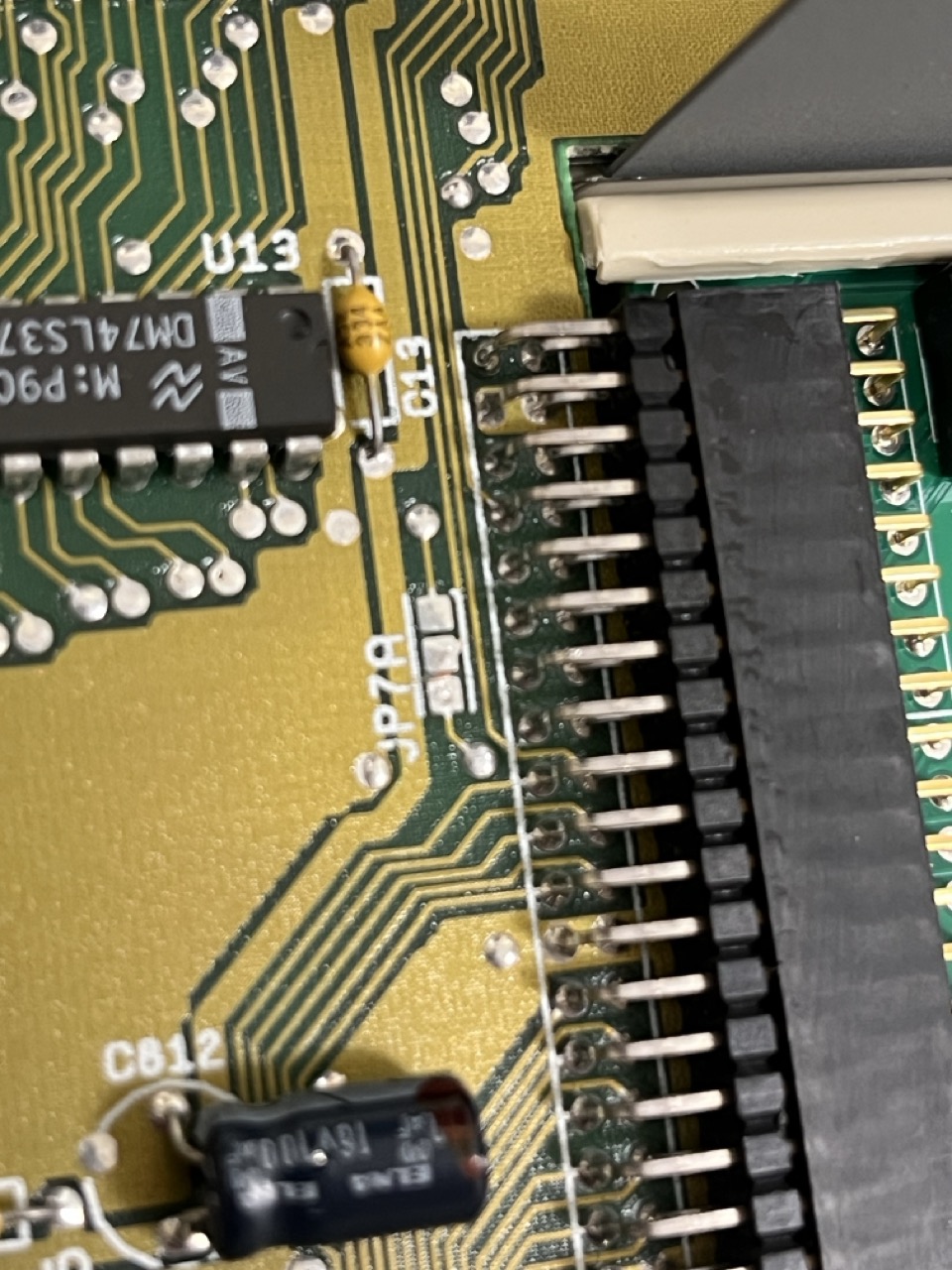

Running AmiKit again, we now get that lovely 1 MB of Chip RAM that will significantly expand the catalog of software we can run on this computer.

Coming up next
I’ll be installing an RGB2HDMI for low-latency, pixel-perfect HDMI output. Stay tuned!